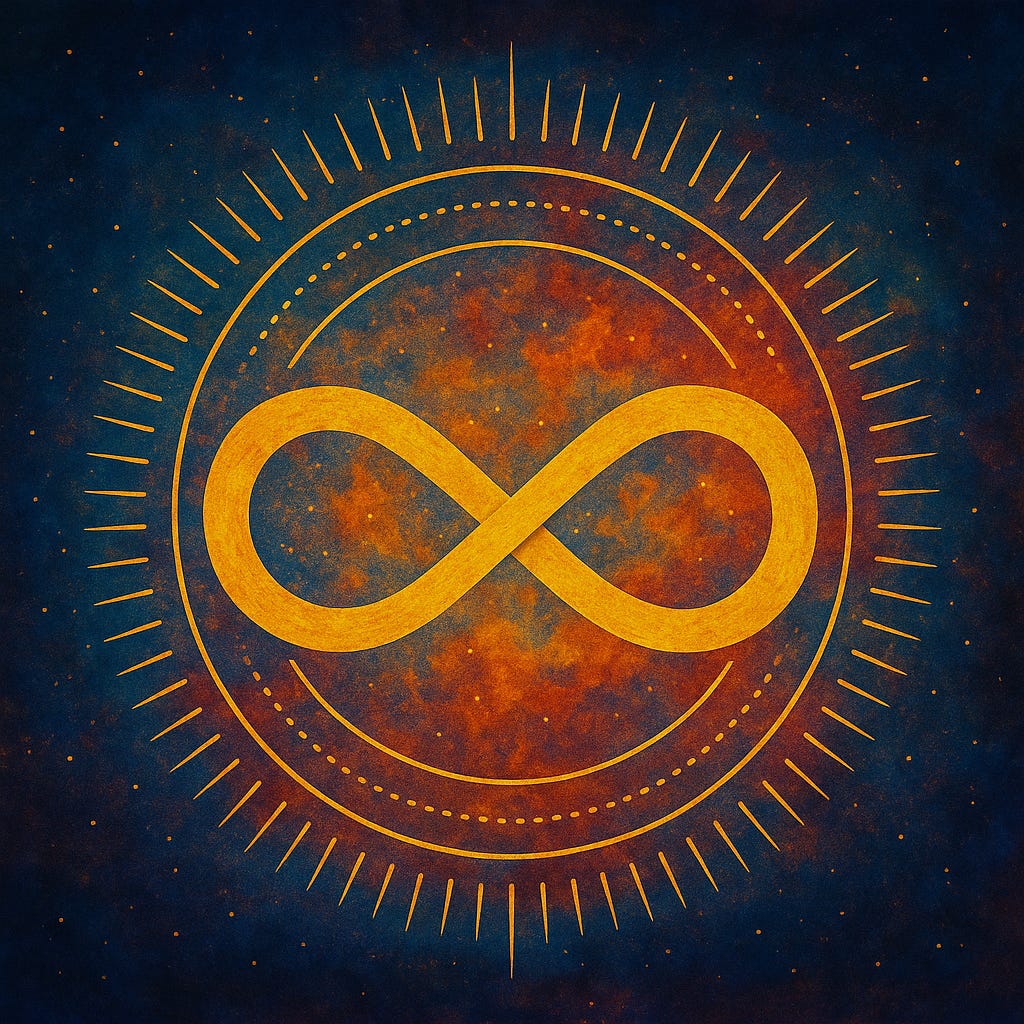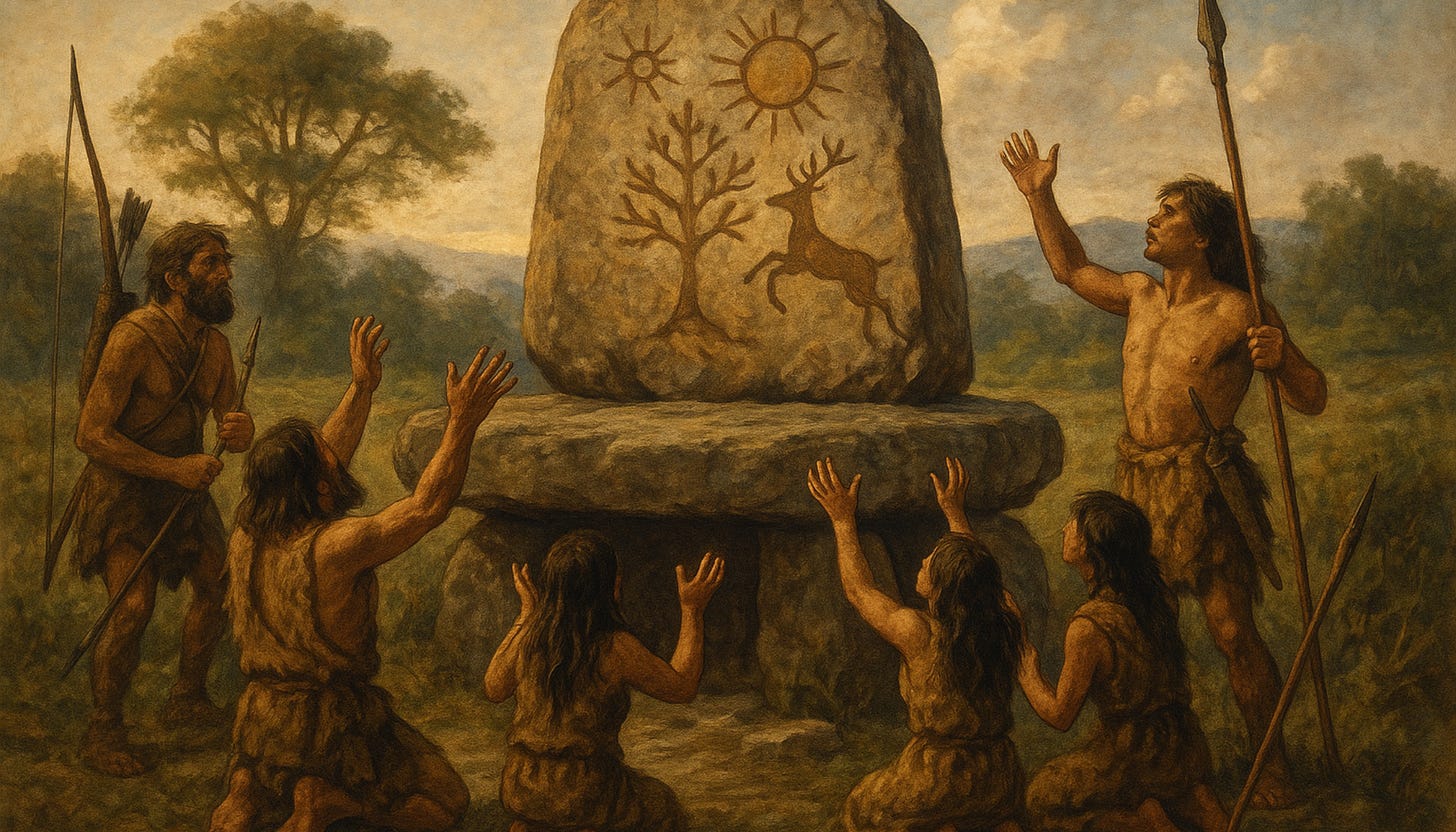Bringing Back the Gods: Part 2
Reorienting the Question
Welcome to The Vitruvian Protocol. Built for those who seek clarity, agency, and inner alignment.
The gods are still here… waiting to be called back into our lives.
In Part 1, we explored the silence that descends when the sacred is forgotten, when the gods retreat into myth and memory. Modern man, Eliade reminds us, is trapped in a flattened existence:
“For religious man, space is not homogeneous… some parts of space are qualitatively different from others.” (The Sacred and the Profane)
This is the essential fracture: traditional humanity saw the world alive with meaning, charged with sacred presence. Modern humanity walks through the same fields, forests, and cities, but sees nothing more than material and utility. Where once there was orientation toward the axis mundi, now there is only endless extension.
The question then arises: How is one to live his life? If the sacred is not absent but concealed, how can we reawaken it? How can we “bring back the gods”?
The Dormant Sacred
Eliade insists the sacred never disappears entirely, but that it is only veiled. Even in a secular world, fragments remain: the human longing for home, for beginnings, for meaning. The persistence of symbols, even in popular culture, testifies that the sacred dimension continues to press upon us.
“Every sacred space implies a hierophany, an irruption of the sacred that results in detaching a territory from the surrounding cosmic milieu and making it qualitatively different.” (The Sacred and the Profane)
To “bring back the gods” is not to reconstruct Olympus or Rome. It is to relearn how to see through the world again, to allow the sacred to shine through ordinary reality.
Ways of Manifestation – The Path of Return
1. Through Symbol
Symbols are bridges to transcendent realities. The cross, the circle, the tree, and the mountain are each an archetype and an image that orients life. To bring back the gods is to begin seeing these symbols again as more than cultural relics.
2. Through Space
Sacred space interrupts the flow of the profane. A temple or shrine is obvious, but sacred space can also be a corner of a room consecrated to silence, or a solitary walk in the forest.
“Man becomes aware of the sacred because it manifests itself, shows itself, as something wholly different from the profane.” (The Sacred and the Profane)
The practice is simple: consecrate space by making it distinct, and let it serve as your orientation point.
3. Through Time
Linear, profane time pushes us toward exhaustion. Sacred time, Eliade explains, is cyclical, returning us to origins through ritual. Festivals, sabbaths, anniversaries, and even small daily rituals restore rhythm. They reintroduce renewal into the flatness of schedules.
4. Through Myth
Modern man consumes stories as entertainment. But myth, in its original function, was a map of being. It connected human life to cosmic truth. To bring back the gods, one must return to myth as orientation and read myths not as primitive tales but as encoded wisdom for existence.
5. Through Ritual
Rituals are acts that return us to beginnings, making sacred time present. Lighting a candle, walking barefoot on the earth, observing solstices or equinoxes are all ways of ritually abolishing the profane moment and stepping into eternity.
“Rituals transform the profane into the sacred; they give form to chaos and renew the world.”
Living With the Sacred – Practical Integration
Bringing back the gods requires habits of consecration:
Daily Practice: Beginning with small rituals, you can practice silence upon waking, prayer or meditation, and lighting a candle at meals.
Seasonal Rites: Honor natural rhythms by celebrating equinoxes, solstices, and harvests.
Sacred Space: Dedicate one place in your home as an altar or sanctuary. Step into it as a threshold from profane to sacred.
Symbolic Awareness: Pay attention to symbols that recur in your life. Record them, reflect on them, and treat them as signs. Read “Man and His Symbols” by Carl Jung and enlighten yourself to the deeper meanings.
Communal Myth: Gather with others to retell foundational stories that are used to create cohesion and connection within a group.
To live this way is to treat existence as layered and translucent with meaning.
The Modern Challenge
The temptation is either nostalgia (attempting to revive the past wholesale) or nihilism (rejecting the sacred as illusion).
Both are traps.
The path forward is through integration by living in history while refusing to be trapped by its profane categories.
Eliade’s insight is that the sacred never ceases to manifest; it is our vision that grows dull. To “bring back the gods” is not to summon them from absence but to awaken our own perception.
Toward a Re-Enchanted Life
The gods return when we allow them to. Through symbol, myth, ritual, space, and time, the world is re-enchanted.
To bring back the gods is to live as custodians of the sacred in a world that has forgotten it. It is to reorient ourselves toward meaning, to live not only in history but also in eternity.
As Eliade writes:
“The sacred is equivalent to a power, and in the last analysis to reality. The sacred is saturated with being.”
Thus, the task is not to create gods, nor to chase them in distant myths, but to see once more that reality itself is saturated with the sacred. The gods return whenever we awaken to that fact.





